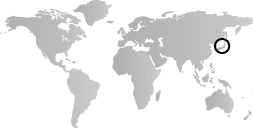The Edo period, also known as the Tokugawa period, is a time of relative peace and stability, following centuries of warfare and disruption. This era of calm leads to an extraordinary expansion in the national economy, including dramatic increases in agricultural production, transportation infrastructure, commerce, population, and literacy. Although the imperial court continues to exist and maintains nominal authority, the Tokugawa shōgunate (bakufu), based in Edo, wields actual political power. Control of the country is divided between the shōgunate, which directly administers about one-quarter of the country and the large cities, and approximately 270 regional military lords (daimyo), who owe fealty to the shōgun while ruling their own domains (han). The bakuhan government is strong and conservative, enforcing strict social policies domestically and keeping a firm limitation on all trade and exchange abroad.
The merchant and artisan classes reap the greatest benefits from the Edo period’s prosperity and urban expansion. Not only do well-established cities such as Osaka and Kyoto thrive, but new castle towns that serve as the administrative center for provincial daimyo and their samurai retainers are built and grow during this time. Using their wealth, city residents (chōnin), who include the above-named classes as well as many samurai, temporarily escape official restrictions by enthusiastically patronizing the pleasure quarters established in all large cities, and the courtesans, entertainers, prostitutes, teahouses, theaters, and restaurants found there. New forms of highly entertaining drama, literature, painting, and printmaking cater to popular trends of the day, making the Edo period an active and innovative time for the arts.


